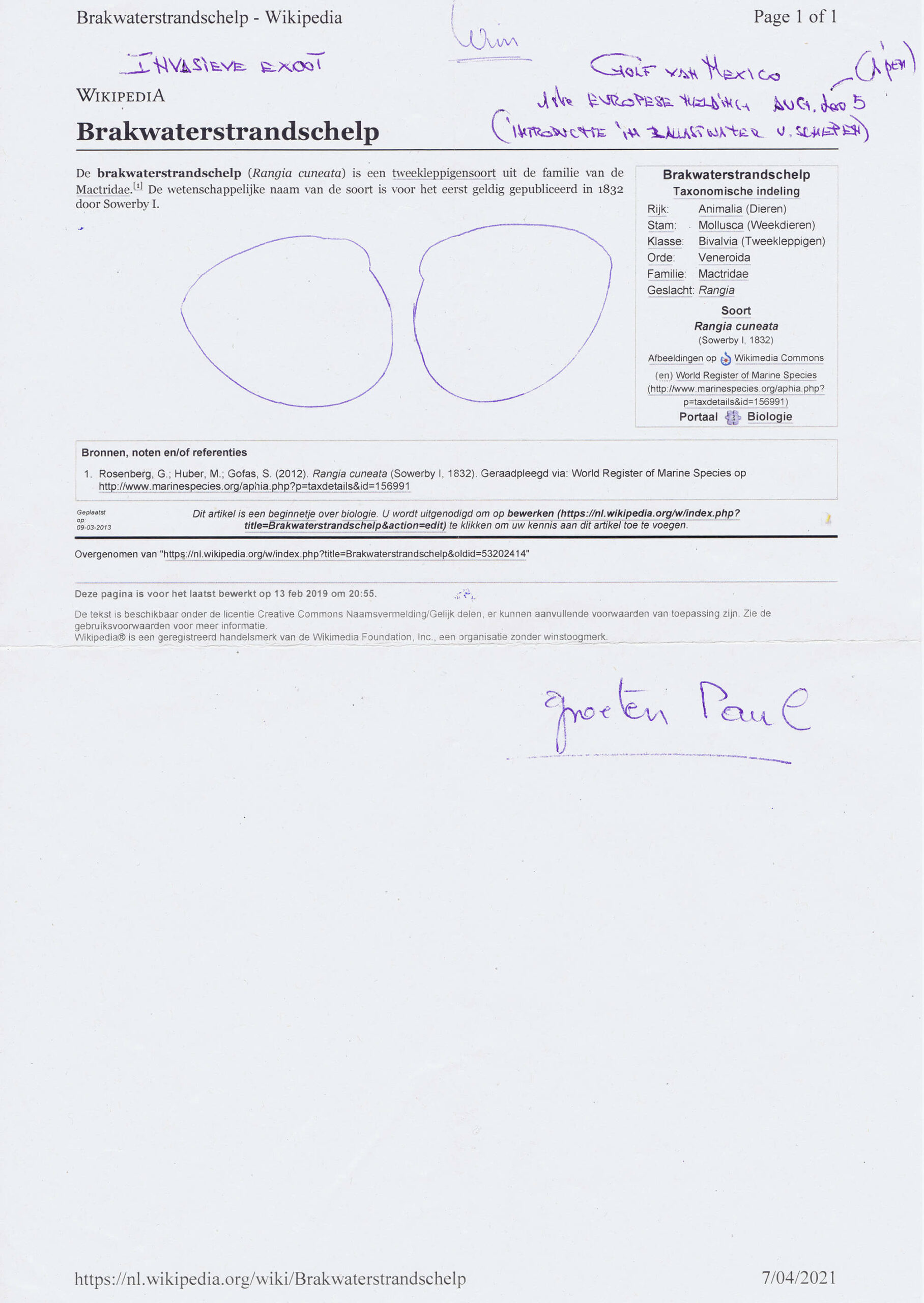What constitutes a ‘document’ and how does it function?
According to the Oxford English Dictionary, the etymological origin is the Latin ‘documentum’, meaning ‘lesson, proof, instance, specimen’. As a verb, it is ‘to prove or support (something) by documentary evidence’, and ‘to provide with documents’. The online version of the OED includes a draft addition, whereby a document (as a noun) is ‘a collection of data in digital form that is considered a single item and typically has a unique filename by which it can be stored, retrieved, or transmitted (as a file, a spreadsheet, or a graphic)’. The current use of the noun ‘document’ is defined as ‘something written, inscribed, etc., which furnishes evidence or information upon any subject, as a manuscript, title-deed, tomb-stone, coin, picture, etc.’ (emphasis added).
Both ‘something’ and that first ‘etc.’ leave ample room for discussion. A document doubts whether it functions as something unique, or as something reproducible. A passport is a document, but a flyer equally so. Moreover, there is a circular reasoning: to document is ‘to provide with documents’. Defining (the functioning of) a document most likely involves ideas of communication, information, evidence, inscriptions, and implies notions of objectivity and neutrality – but the document is neither reducible to one of them, nor is it equal to their sum. It is hard to pinpoint it, as it disperses into and is affected by other fields: it is intrinsically tied to the history of media and to important currents in literature, photography and art; it is linked to epistemic and power structures. However ubiquitous it is, as an often tangible thing in our environment, and as a concept, a document deranges.
the-documents.org continuously gathers documents and provides them with a short textual description, explanation,
or digression, written by multiple authors. In Paper Knowledge, Lisa Gitelman paraphrases ‘documentalist’ Suzanne Briet, stating that ‘an antelope running wild would not be a document, but an antelope taken into a zoo would be one, presumably because it would then be framed – or reframed – as an example, specimen, or instance’. The gathered files are all documents – if they weren’t before publication, they now are. That is what the-documents.org, irreversibly, does. It is a zoo turning an antelope into an ‘antelope’.
As you made your way through the collection,
the-documents.org tracked the entries you viewed.
It documented your path through the website.
As such, the time spent on the-documents.org turned
into this – a new document.
This document was compiled by ____ on 10.02.2022 12:03, printed on ____ and contains 28 documents on _ pages.
(https://the-documents.org/log/10-02-2022-3792/)
the-documents.org is a project created and edited by De Cleene De Cleene; design & development by atelier Haegeman Temmerman.
the-documents.org has been online since 23.05.2021.
- De Cleene De Cleene is Michiel De Cleene and Arnout De Cleene. Together they form a research group that focusses on novel ways of approaching the everyday, by artistic means and from a cultural and critical perspective.
www.decleenedecleene.be / info@decleenedecleene.be - This project was made possible with the support of the Flemish Government and KASK & Conservatorium, the school of arts of HOGENT and Howest. It is part of the research project Documenting Objects, financed by the HOGENT Arts Research Fund.
- Briet, S. Qu’est-ce que la documentation? Paris: Edit, 1951.
- Gitelman, L. Paper Knowledge. Toward a Media History of Documents.
Durham/ London: Duke University Press, 2014. - Oxford English Dictionary Online. Accessed on 13.05.2021.

At a dental practice, the white Alligat®-powder is mixed with the right amount of water to get a mouldable dough that is pressed upon a patient’s teeth. After thirty seconds, the Alligat®-dough stiffens and takes on a rubber-like quality. At that point, still white, it must be removed from the patient’s mouth. Over the next few hours, the mould turns increasingly pink as the substance becomes less humid. Now, it can be used as a mould to create a positive master cast of the patient’s teeth.
Outside the dental practice, the powder’s possibilities remain to be fully explored.

First published as part of De Cleene De Cleene. ‘Amidst the Fire, I Was Not Burnt’, Trigger (Special issue: Uncertainty), 2. FOMU/Fw:Books, 25-30
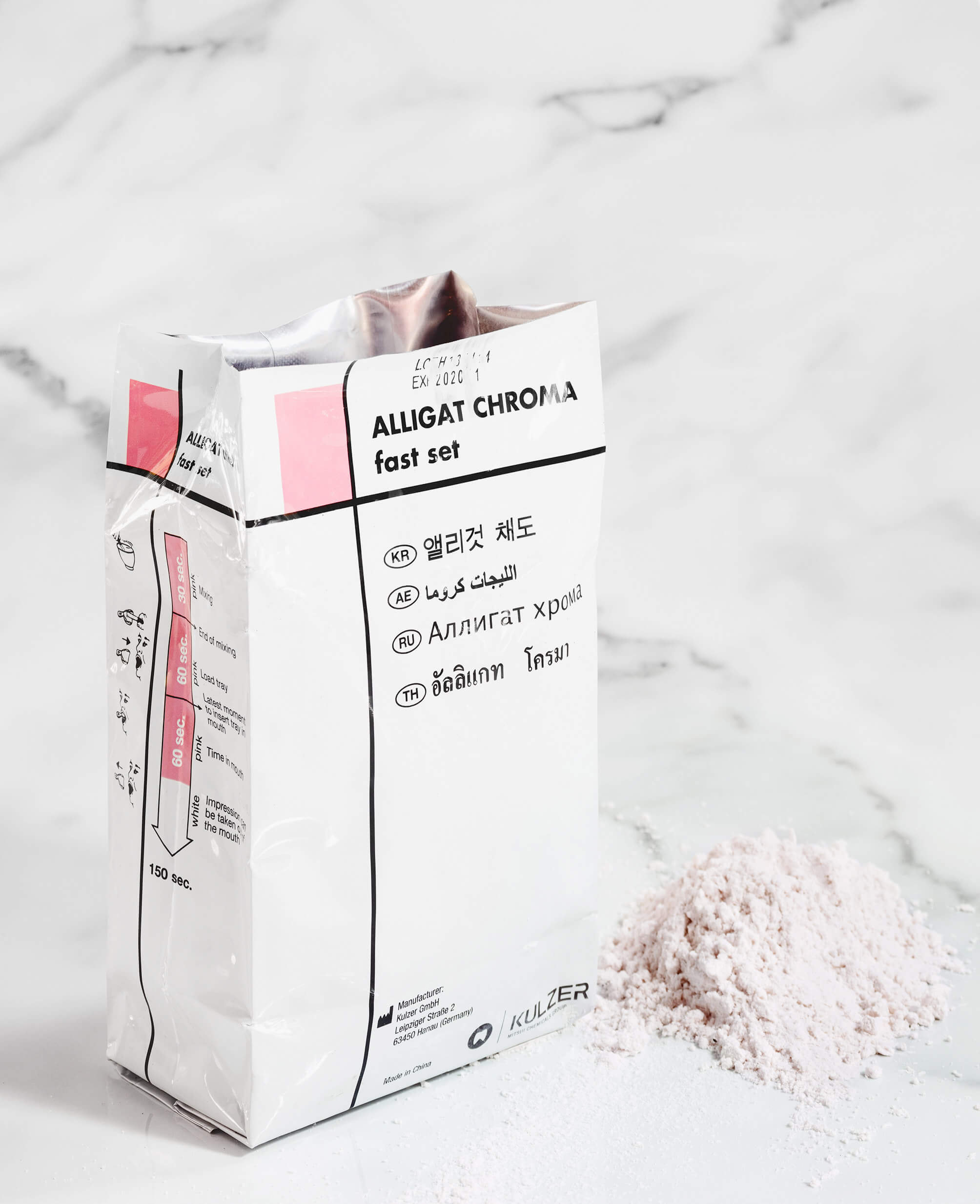
‘The masons in training pour a concrete slab and build four walls upon it in a stretcher bond. Then the block comes to our department and the students in the course Electrical installer (residential) can grind channels and drill cavities in it.’
[…]
‘It’s not always a success from the outset, but they learn quickly.’
[…]
‘Never grind horizontally, always vertically. Diagonally if there is no other way.’
[…]
‘Two fingers wide.’
[…]
‘After this it goes to the sanitary department. After the bell drilling, the demolition hammer follows and the masons make us a new block.’
Competentiecentrum VDAB, Wondelgem, July 2019.
First published in A+ Architecture in Belgium, A+ 279, Schools (August, September 2019), https://www.a-plus.be/nl/tijdschrift/schools
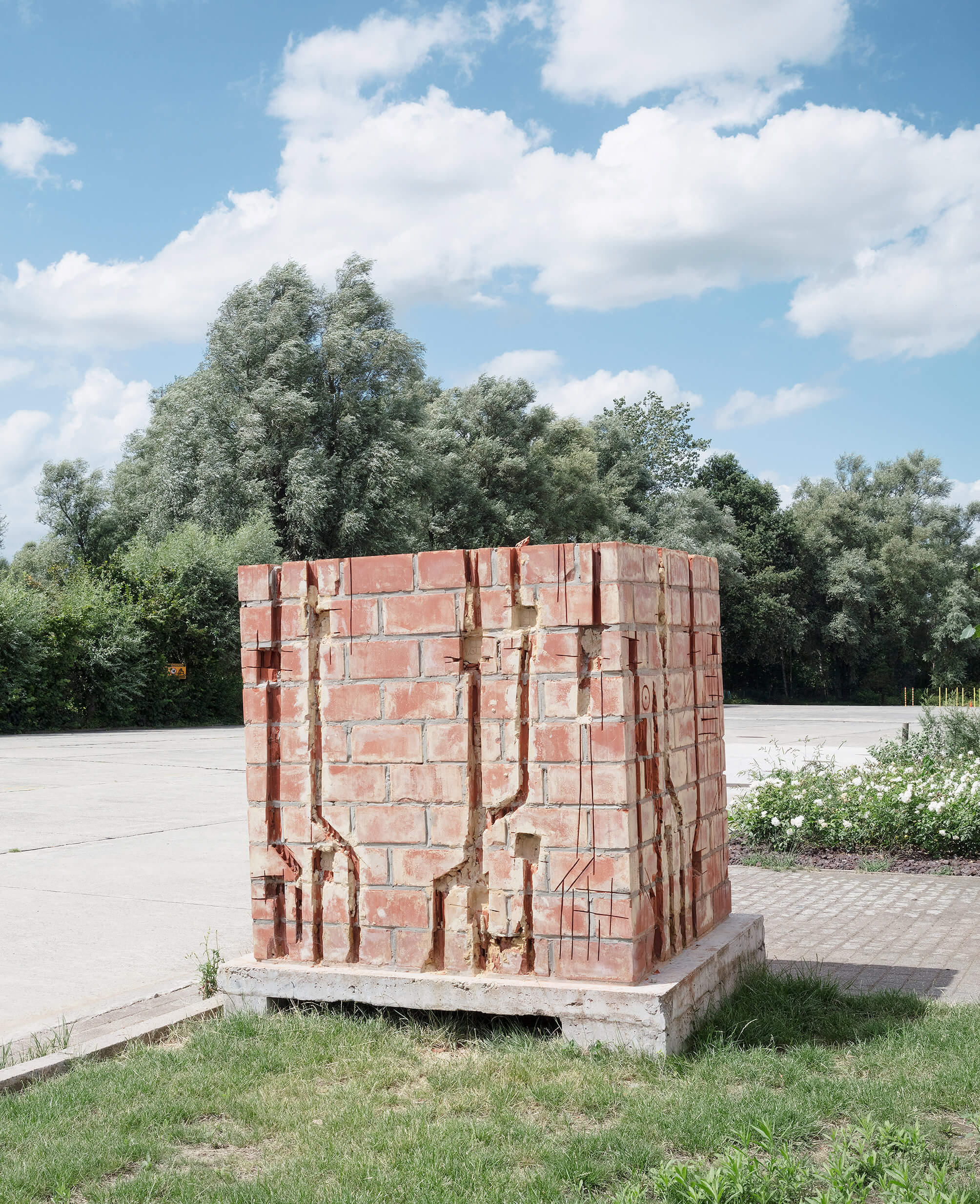
On the online thrift shop 2dehands.be the homepage generates a ‘for you’ section. On November 9th this section listed, among other things, a picture of the sky on a patch of concrete. On closer inspection, it became clear that it was the sky’s reflection in a mirror with a red frame and four lightbulbs in it, the kind you might see at the hairdresser’s or backstage in a television studio or theatre. The seller estimates the mirror’s current value to be 45,00 EUR. The listing includes five photographs. In the fifth one, the object for sale reflects a bucolic landscape: a blue sky, white clouds, some trees and a fragment of a barn.
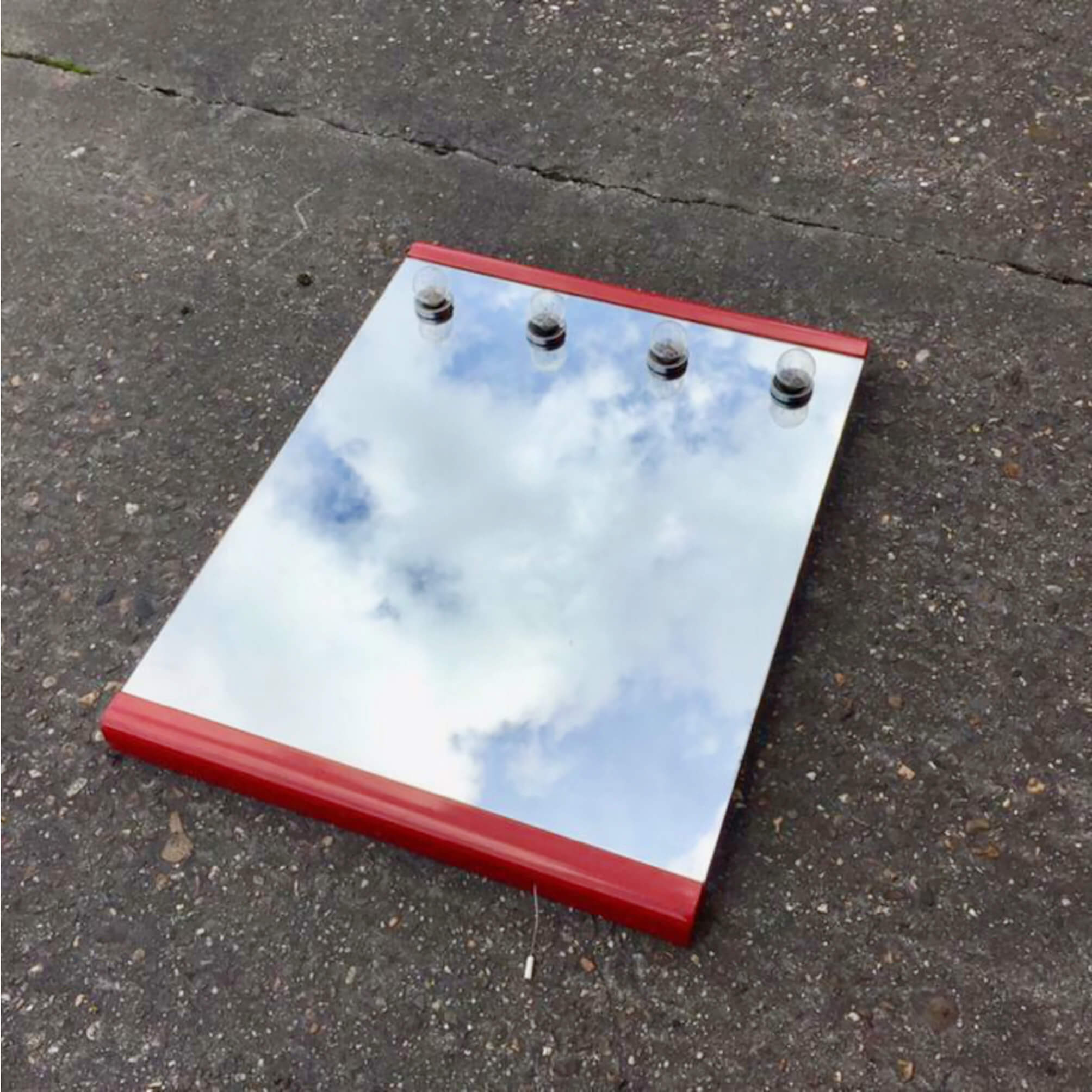
A visit to the Royal Observatory of Belgium, in Ukkel. Most of the domes are damaged and need repairing. Only a few telescopes are in use. It is difficult to find a good spot from which to film the site. When we asked the people at the Royal Meteorological Institute – the Observatory’s neighbouring institution – if we could access their building’s roof to film the observatory, the answer was ‘no’.
I (M.D.C.) remember there was a fire nearby. We couldn’t see the flames, but a tall dark plume of smoke rose above the trees lining the site. We didn’t insist any longer and ceased our attempt to access the roof, hoping we might find a good spot to film the smoke with a dome in the foreground.
Kesteloot, J. Leerboek van Cosmografie voor Middelbaar en Lager Normaal Onderwijs (derde vermeerderde uitgave). Brugge: Firma Karel Beyaert, 1948.

At the State Archive in Kortrijk, I am leafing through a 1955 photo album of the construction of the provisional church in Lokeren by the famous furniture company Kunstwerkstede De Coene. Gigantic wooden, prefabricated beams structure the building. It is cold. An old man in a grey suit shuffles between the racks to look up the date of birth of his great great grandmother. Snow covers the unfinished provisional roof. A bus passes, I reckon, through the pouring rain.
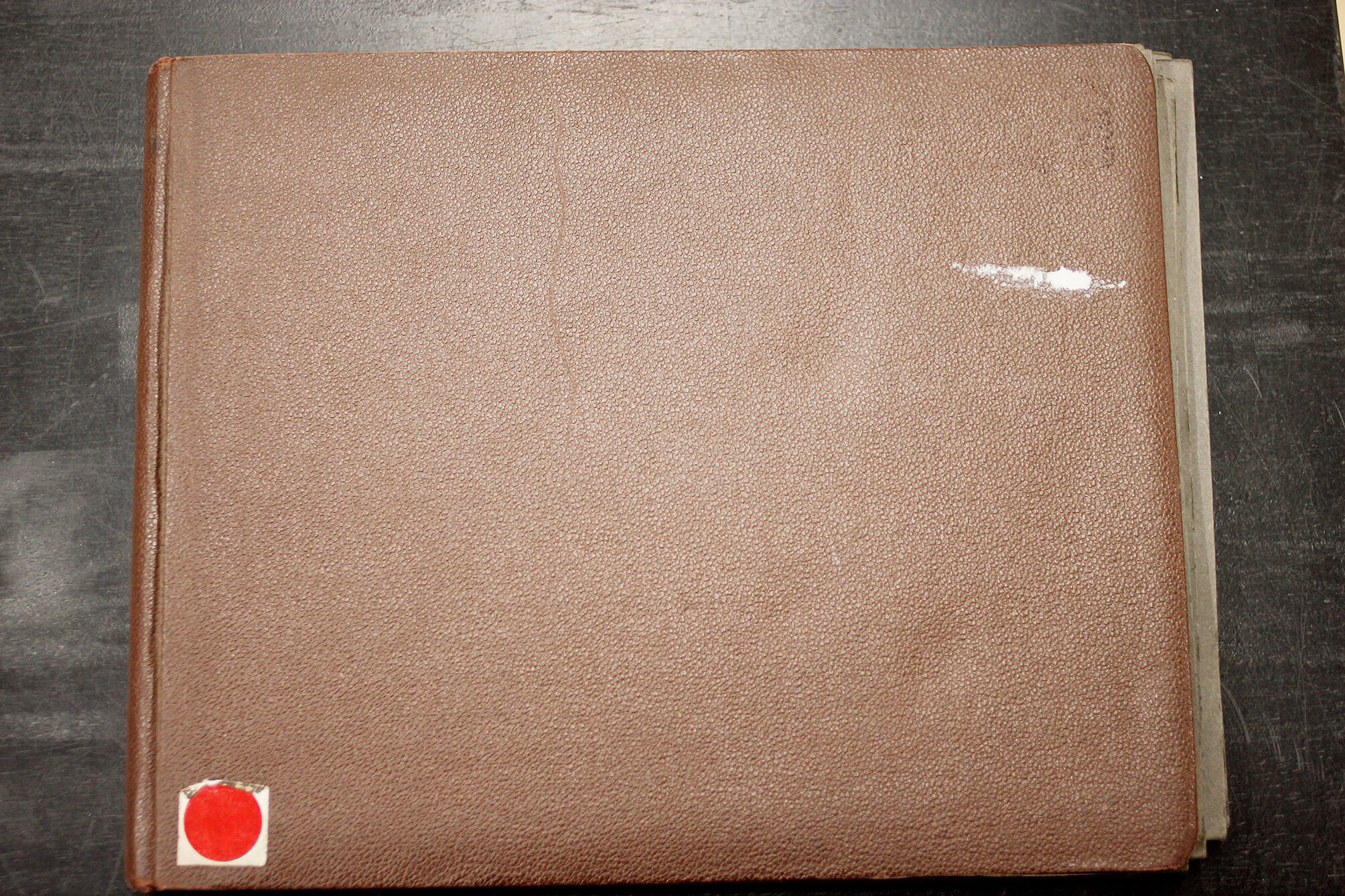
The 48-inch Oschin Schmidt, a renowned reflecting telescope at Palomar Observatory, California, was used for the Palomar Observatory Sky Survey (POSS), published in 1958, one of the largest photographic surveys of the night sky.
Based on the man’s pipe shadow’s direction, thrown onto the telescope, there is reason to believe an off-camera flash was used to make the picture.
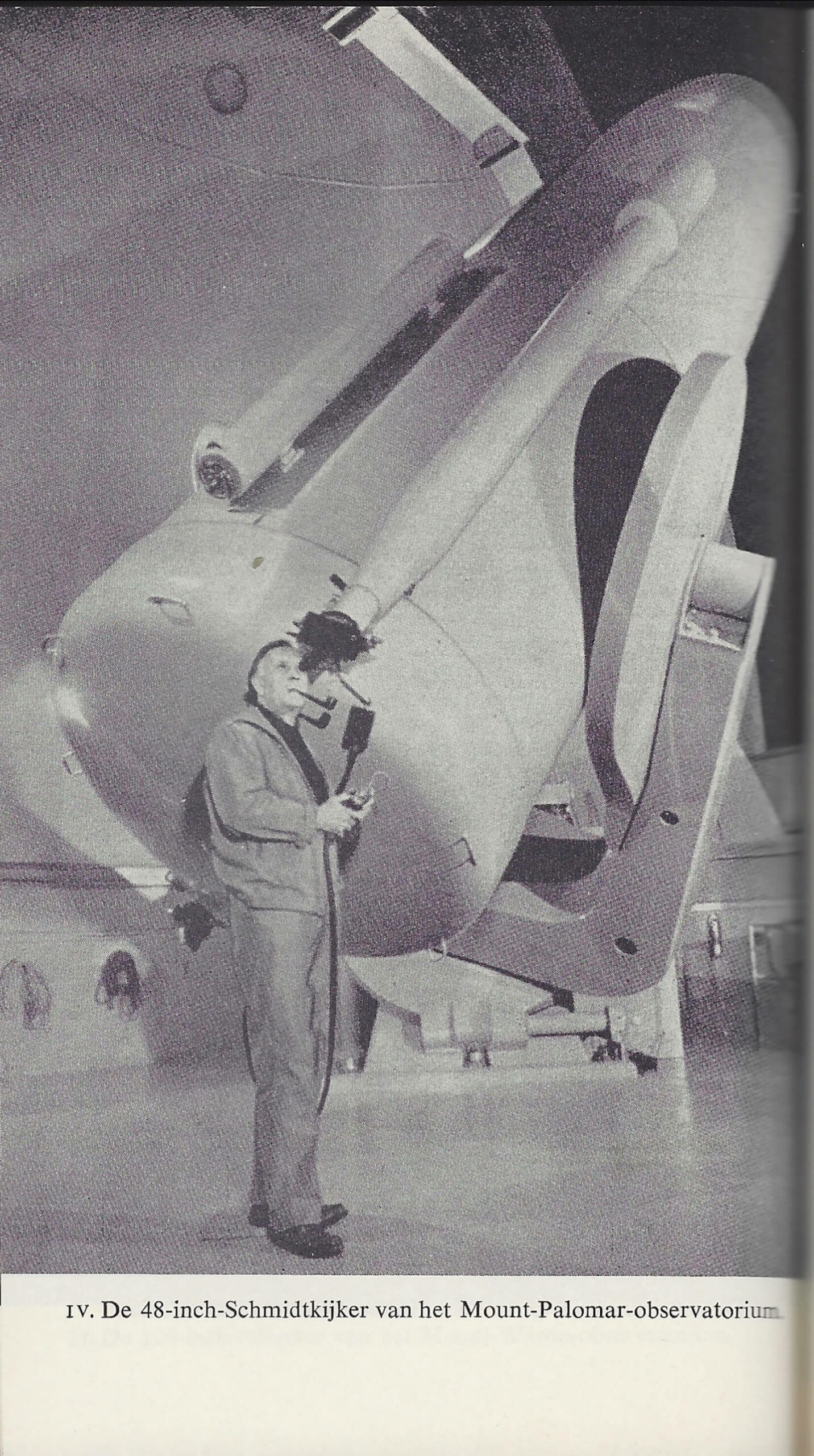
‘ORIGINAL. Rire de tout ce qui est original, le haïr, le bafouer, et l’exterminer si l’on peut.’
[‘ORIGINAL. Laugh with everything that’s original, hate it, scold it, exterminate it if you can.’]
Flaubert. Bouvard et Pécuchet (présenté par Raymond Queneau). Paris: Livre de poche, 1959 (with p. 232-233: dried leaf of a ginkgo tree, and p. 324-325: dried leaf of a birch tree), p. 429 [2,00 EUR, Librairie Vic-sur-Cère, August 2021].
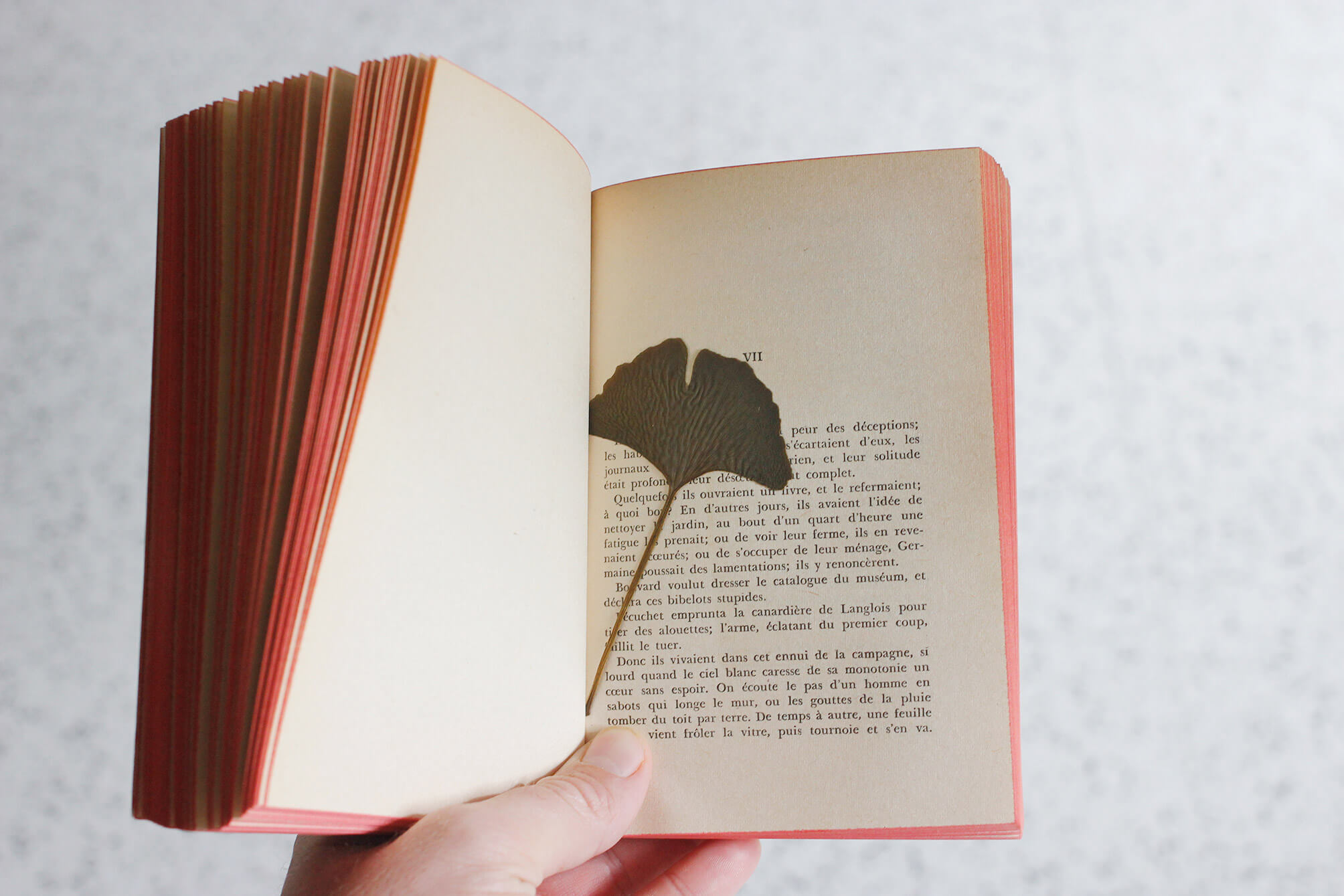
Belgium, approximately 1.5km from the French border, photograph made on 16.06.2018.
The European flag symbolises both the European Union and, more broadly, the identity and unity of Europe. It features a circle of 12 gold stars on a blue background. They stand for the ideals of unity, solidarity and harmony among the peoples of Europe. The number of stars has nothing to do with the number of member countries, though the circle is a symbol of unity.1
- Coat of arms of Gmina Puck, a rural district in Puck County, Pomeranian Voivodeship, in northern Poland.
- Illegible.
- F.C. Hansa, Mecklenburg, Pommern, FC Hansa Rostock is a German association football club based in the city of Rostock, Mecklenburg-Vorpommern. They have emerged as one of the most successful clubs from the former East Germany and have made several appearances in the top-flight Bundesliga. Hansa Rostock’s official anthem is “FC Hansa, wir lieben Dich total”. Hansa struggles with hooliganism, estimating up to 500 supporters to be leaning towards violence. The club’s logo consists of a red sailing ship with a blue sail showing the Rostock Griffin.
- Mon École Écologique.org is an organization for environmental conservation. On 07.01.2021 there was no website listed on this URL.
- Illegible.
- Illegible, apart from ’1962’ in the middle.
- Innocenti Bruderschaft, EL, 2018, a community of German Lambretta Innocenti riders and aficionados.
- Imag’Ink, Bretignolles Sur Mer, Tatoueur, 06 06 44 13 51, a French tattoo shop.
- Illegible.
- Hardly legible, the only word that can be made out is ‘Futbolom’: Russian for soccer.
- Kaluga on tour. Kaluga is a Russian city 150km southwest of Moscow. It is often called the cradle of space exploration thanks to the city’s most famous resident: Konstantin Tsiolkovsky.
- Hansa Ultras, F.C. Hansa. The Ultras are a group of F.C. Hansa fans (see: ‘3’).
- Illegible because ‘12’ was stuck over it.
- Illegible.
- La Hutoise is a regional student-association for higher education students from the Belgian town of Huy and its surroundings. Its aim is to bring together students from Huy in a spirit of camaraderie and to perpetuate student folklore. The logo consists of a two headed bird of prey with a cap on each head. The bird wears a scarf over one shoulder and holds a glass of beer in each paw.
- F.C. Hansa, Grimmen. The F.C. Hansa logo (see ‘3’ and ‘12’) is combined with the coat of arms of Grimmen: a griffin on a pile of 10 bricks. Grimmen is a German town in Nordvorpommern on the banks of the river Trebel.
- Illegible.
- Heil Hansa. To the left of this text the F.C. Hansa logo (see ‘3’, ‘12’ and ‘16’), on the right a logo consisting of a black bull with his tongue out and a golden crown on his head. This controversial sticker lead to several arrests in the run-up to the match between F.C. Hansa Rostock and Bayern München in February 2020. Supporters of F.C. Hansa had attached this sticker to public buildings on their way to the stadium.
- Illegible because ‘16’ was stuck over it.
- The Cuban flag.
- Illegible.
- Illegible.
- Kaluga (see ‘11’).
- De Veterinnen, a round, black sticker with a red print of a head wearing a round hat and a carnivalesque collar with a carrot for a nose. No further information found.
- Zlombol 11. Złombol is a yearly charity car rally racing event that starts in Katowice Poland. Contesters must drive a car that was built or designed during the communist era. The destination of the 2011 edition was Loch Ness.
- F.C. Hansa, Mecklenburg, Pommern, identical sticker to ‘3’, see also ‘12’, ‘16’, and ‘18’.
- Torpedo Moscow, only for white. Football club Torpedo Moscow is a Russian professional club based in Moscow, founded in 1930. Some fans of the club wave far-right symbols and banners, both during and outside of matches. Massive fan-protest ensued when the club tried to sign a black player in 2018. The player’s contract was cancelled.
- Heil Hansa. See ‘3’, ‘12’, ‘16’, ‘18’ and ‘26’.
- Illegible.
- Illegible.
- Illegible.
- Illegible.
- F.C. Hansa. Variation of ‘3’ and ‘26’ with a circle of yellow crops around the logo. See also ‘12’, ‘16’, ‘18’ and ‘28’.
- Live animals, contents: Rivne UA. These stickers are required by the International Air Transport Association for airline cargo pet travel. Rivne is a city in western Ukraine (UA) with an international airport. The sticker does not specify the transported animal but displays a dog, two birds, two fish and a turtle.
- Illegible.
- Illegible.
- Illegible.
- Illegible, apart from ‘lska’ on the bottom.
- Norrland Fly Guys, Reading Water. The sticker displays a minimal landscape with two pine trees, and a shed on a chunk of floating ice, a single four-point star shines in the sky. Norrland is the northernmost part of Sweden. No further information found. Whether the ‘fly guys’ own airplanes or are involved in fly fishing is unclear.
- This sticker displays – what appears to be – a smiling potato in front of an enlarged snow crystal. No further information found.
- Traumsucht is an artist collective from Berlin. Their website lists German rap-artists
- Illegible.
https://europa.eu/european-union/about-eu/symbols/flag_en
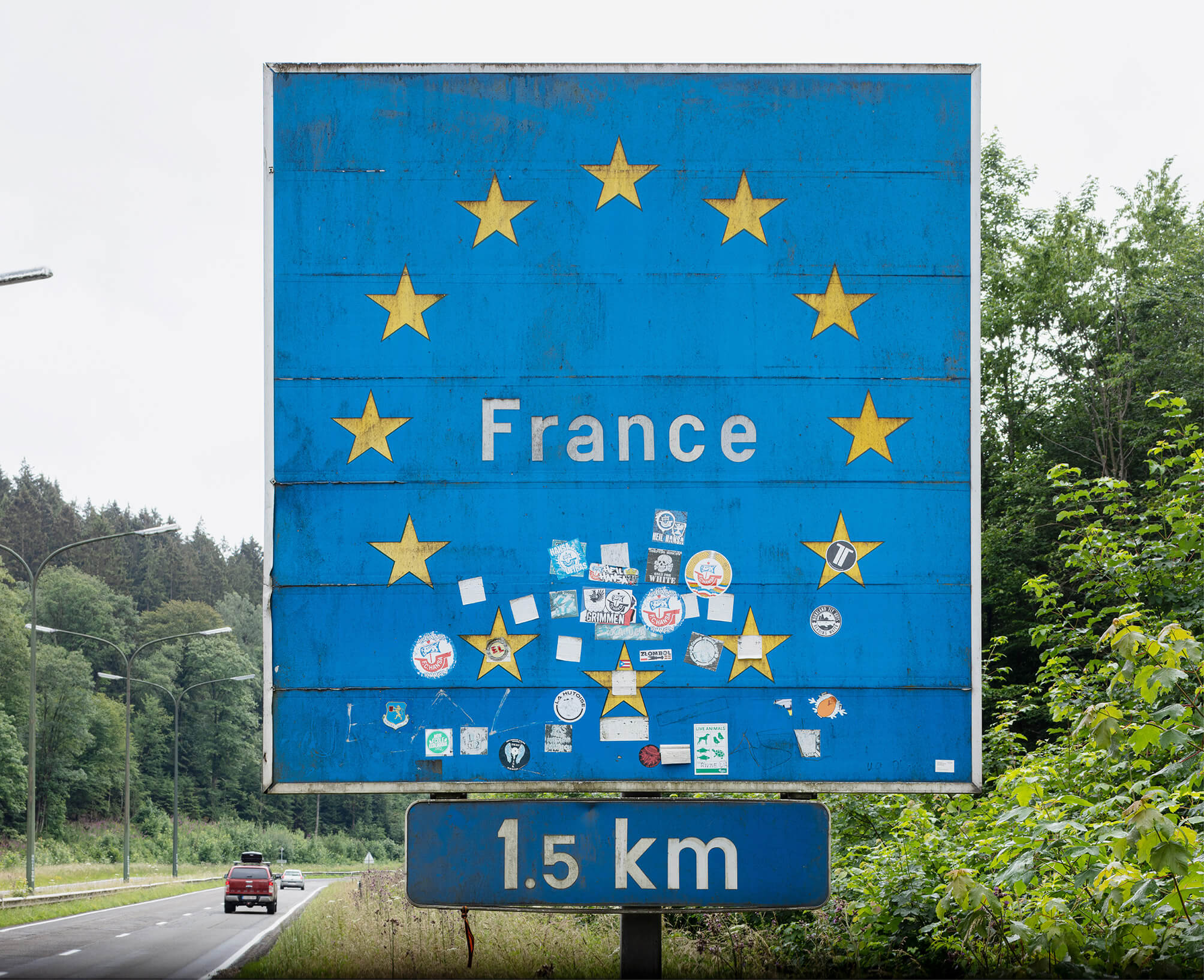
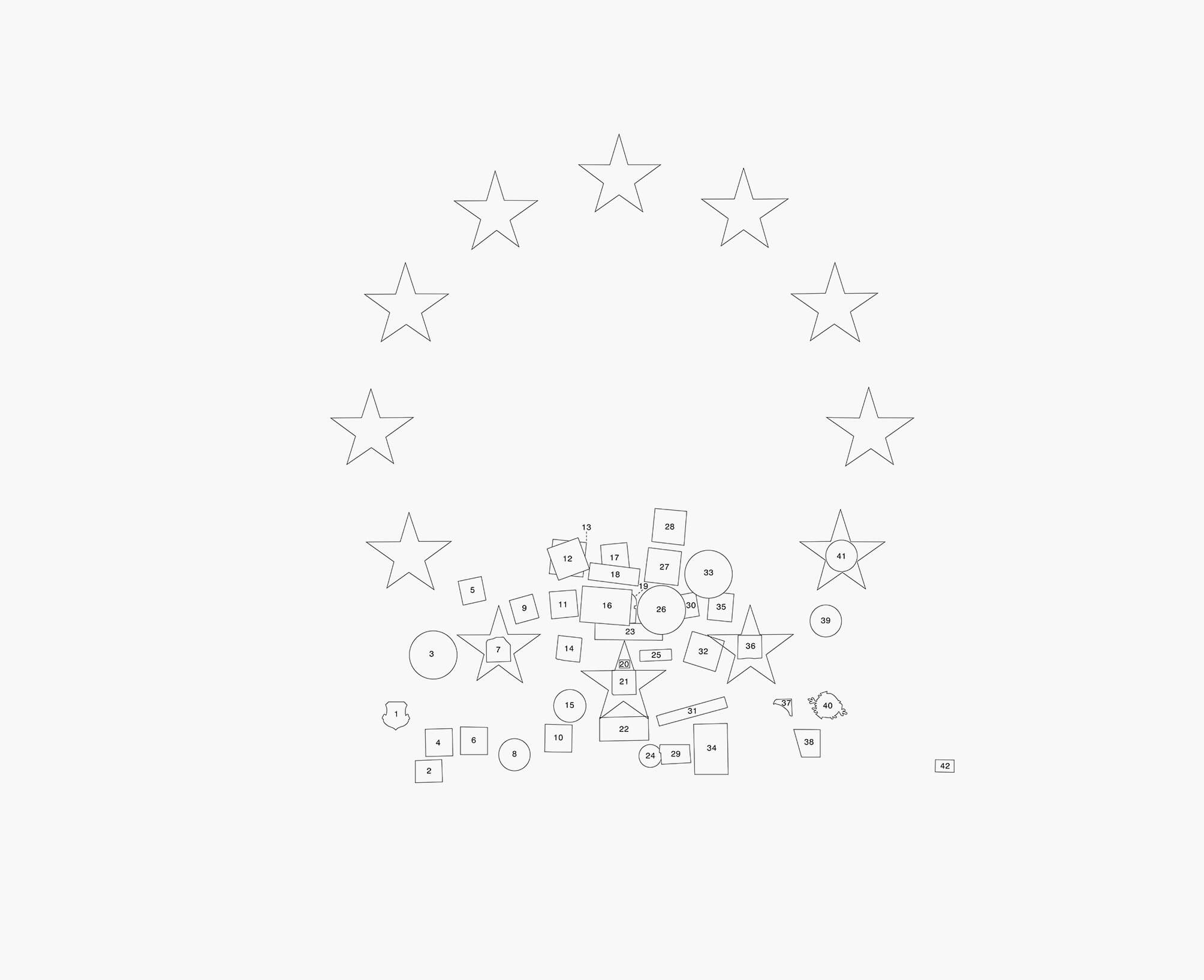
To detect gravitational waves, physicists built enormous research centers, amongst others at Livingston, Louisiana. The facility mainly consists of two tunnels in an L-shape. Mirrors inside provide data. Disturbances from gravitational waves are miniscule. To prevent interference from outside, such as vibrations caused by people passing in the neighbourhood, the mirrors have to be detached from the earth. They ‘float’, suspended by glass fibers in a pendulum-like construction. As I was watching my screen, a courier was on his way to deliver a book (Noel-Todd, J. The Penguin Book of the Prose Poem: From Baudelaire to Anne Carson. London: Penguin, 2019).
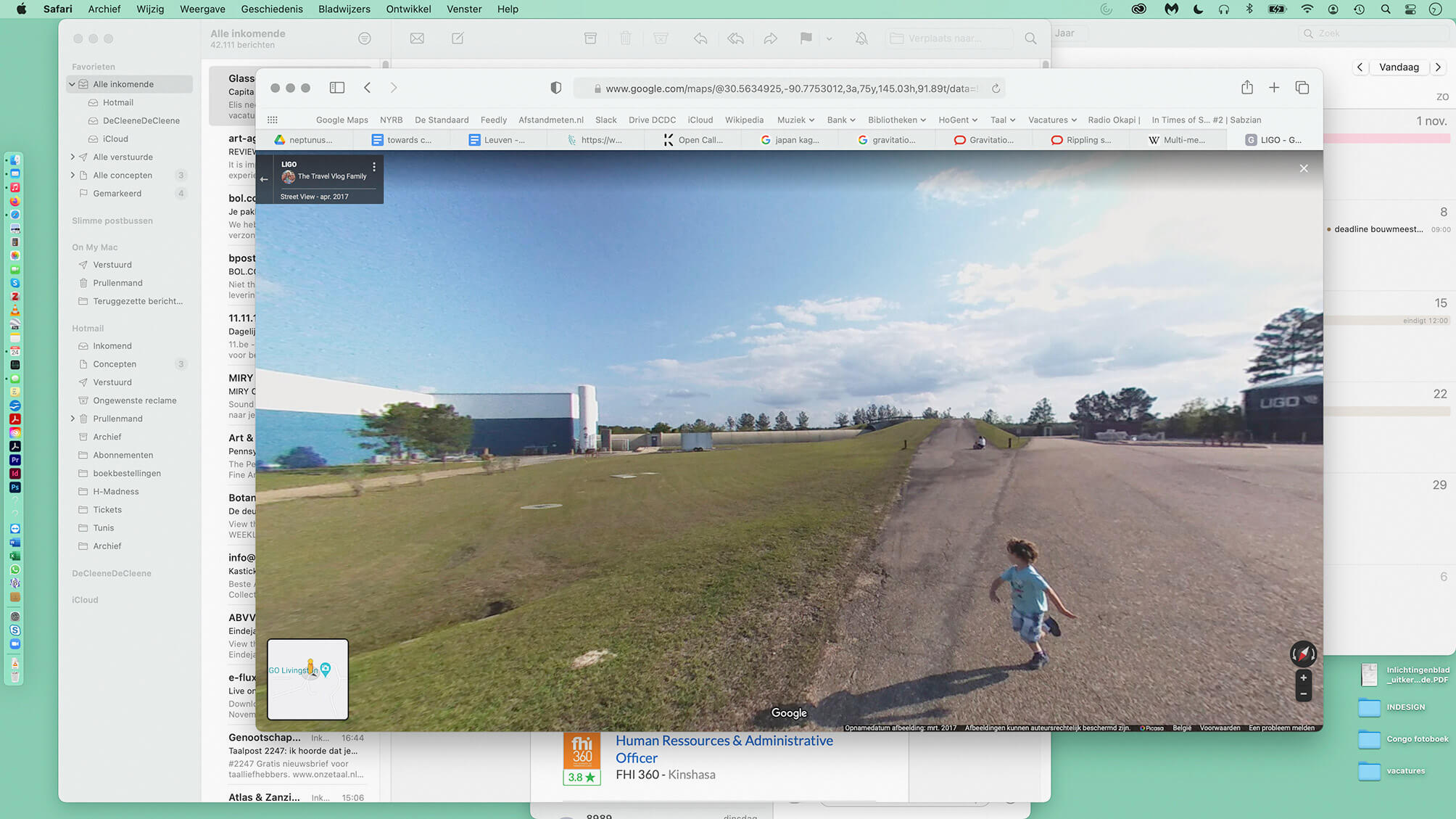
On May 6th 2020, 14h06 and 31 seconds, the Belgian Seismological Institute records an earthquake with a 1,7 magnitude in the region of Braine-Le-Compte. Three reactions from people in the neighbourhood, filed by the Institute, confirm the official seismological recordings. The Institute’s website classifies the earthquake as a ‘quarry blast’.
http://seismologie.be/nl/seismologie/aardbevingen-in-belgie/en130qj1o
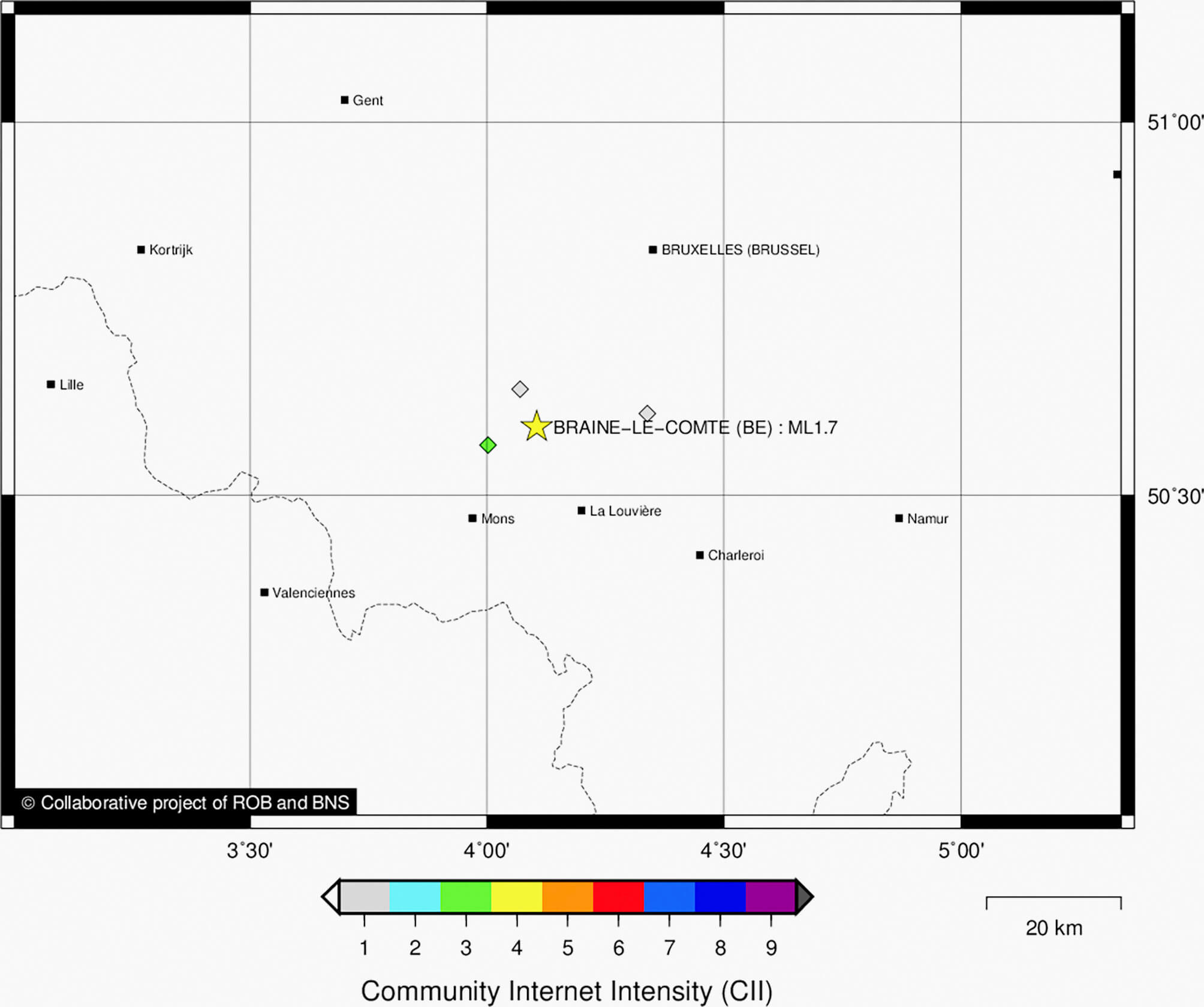
A Sunday stroll near my parents’ house. Along one of the roads between the fields, old poplars have been felled. Young trees have been planted. Each one has a baby blue coloured label, identifying them as Poplar tree, and, more specifically, the ‘Vesten’ cultivar. This cultivar is planted since it is one of the cultivars known for its resistance with regards to bacteria, diseases and insects. The tags on the trunks have staples keeping them together. They’re like bracelets. Come spring, the expanding diameter of the fast growing poplar species’ trunk will tear them apart.
Steenackers, M., Schamp, K., & De Clercq, W. (2018). De INBO variëteiten van populier, een aanwinst voor de Europese populierenteelt. Silva belgica : tijdschrift van de koninklijke belgische bosbouwmaatschappij = bulletin de la société royale forestière de belgique, N°4/2018, 40-47. [5].
https://purews.inbo.be/ws/portalfiles/portal/15044340/Dossier_populier_INBO_KBBM.pdf

A half a day’s walk from the Fuente Dé teleférico, there are less and less traces of passers-by. The path to Sotres suddenly runs through a lusher green. The fence between two pastures keeps the sheep from crossing and coincides with the border between two regions. A hole in the fence would change the landscape’s hue.

Near Avenue 61 on an artificial island close to Seef, a truck is being towed after the driver lost control over the vehicle and flipped it onto its side. A warm wind blows in from the Persian Gulf.
A police officer signals us to come closer. ‘Why are you taking pictures?’ he asks. ‘This is just an accident. You have to delete the pictures from your phone. Now.’ After checking the pictures-folder on our phones, he gets in his car, drives a few metres, stops the car and rolls down his window. ‘And don’t do it again!’ he yells. Then he drives off, raising a cloud of sand in his wake.
Photograph taken and recovered from my trash bin on 18.12.2020.

Article 75 of the Royal Decree containing general regulations for road traffic and the use of public roads, published in Het Belgisch Staatsblad on 9 December 1975, lists the rules for longitudinal markings indicating the edge of the roadway.
According to 75.1, there are two types of markings that indicate the actual edge of the roadway: a white, continuous stripe and a yellow interrupted line. The former is mainly used to make the edge of the roadway more visible; the latter indicates that parking along it is prohibited.
In 75.2, the decree focuses on markings that indicate the imaginary edge of the roadway. Only a broad, white, continuous stripe is permitted for this purpose. The part of the public road on the other side of this line is reserved for standing still and parking, except on motorways and expressways.
https://wegcode.be/wetteksten/secties/kb/wegcode/262-art75

A Sunday stroll near my parents’ house. Along one of the roads between the fields, old poplars have been felled. Young trees have been planted. Each one has a baby blue coloured label, identifying them as Poplar tree, and, more specifically, the ‘Vesten’ cultivar. This cultivar is planted since it is one of the cultivars known for its resistance with regards to bacteria, diseases and insects. The tags on the trunks have staples keeping them together. They’re like bracelets. Come spring, the expanding diameter of the fast growing poplar species’ trunk will tear them apart.
Steenackers, M., Schamp, K., & De Clercq, W. (2018). De INBO variëteiten van populier, een aanwinst voor de Europese populierenteelt. Silva belgica : tijdschrift van de koninklijke belgische bosbouwmaatschappij = bulletin de la société royale forestière de belgique, N°4/2018, 40-47. [5].
https://purews.inbo.be/ws/portalfiles/portal/15044340/Dossier_populier_INBO_KBBM.pdf

Article 75 of the Royal Decree containing general regulations for road traffic and the use of public roads, published in Het Belgisch Staatsblad on 9 December 1975, lists the rules for longitudinal markings indicating the edge of the roadway.
According to 75.1, there are two types of markings that indicate the actual edge of the roadway: a white, continuous stripe and a yellow interrupted line. The former is mainly used to make the edge of the roadway more visible; the latter indicates that parking along it is prohibited.
In 75.2, the decree focuses on markings that indicate the imaginary edge of the roadway. Only a broad, white, continuous stripe is permitted for this purpose. The part of the public road on the other side of this line is reserved for standing still and parking, except on motorways and expressways.
https://wegcode.be/wetteksten/secties/kb/wegcode/262-art75

At the State Archive in Kortrijk, I am leafing through a 1955 photo album of the construction of the provisional church in Lokeren by the famous furniture company Kunstwerkstede De Coene. Gigantic wooden, prefabricated beams structure the building. It is cold. An old man in a grey suit shuffles between the racks to look up the date of birth of his great great grandmother. Snow covers the unfinished provisional roof. A bus passes, I reckon, through the pouring rain.

Most mornings I eat three slices of bread. I stack them. Between the highest slice and the one in the middle I put a slice of cheese (young Gouda). I put the whole in the microwave1 for 1 minute and 50 seconds. The result is what I like to call a smelteram2.
On the morning of my thirty-second birthday the plate broke in half during heating.
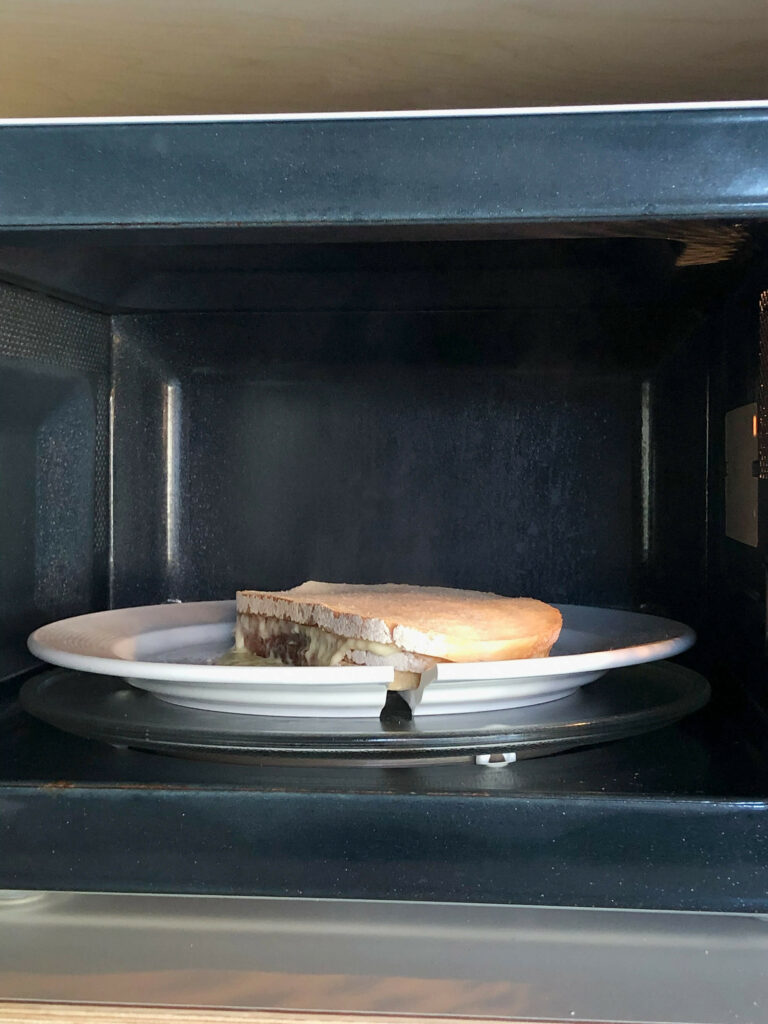
A contraction of smelten (Dutch for melting) and boterham (Dutch for a slice of bread).
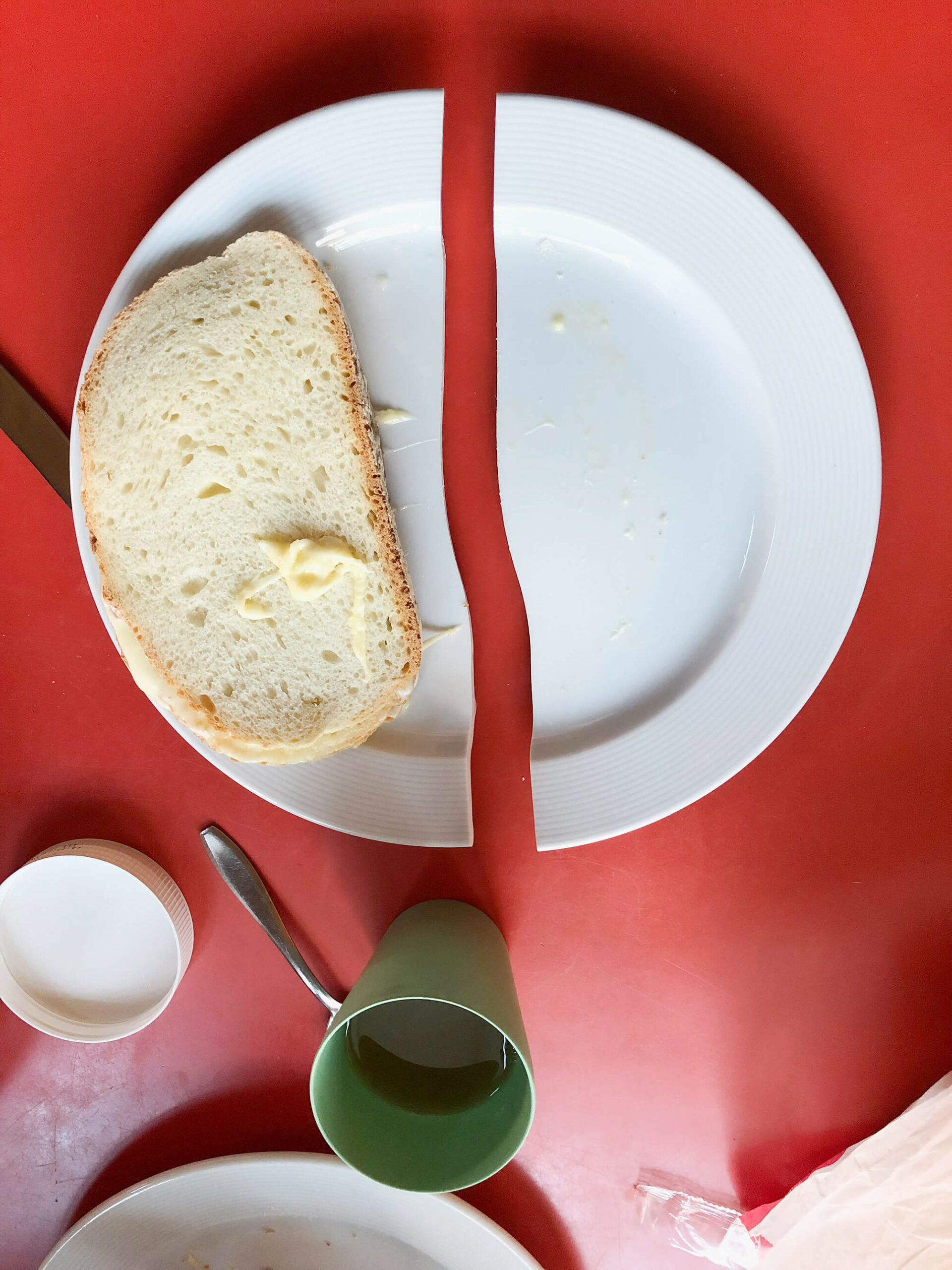
A carving that looks like a stitched-up scar (a long, slightly curved line crossed at a right angle by eleven short straight lines) is inserted into a short statement about Celine and Logan. An initial of Celine’s last name is included. At first sight it looks like a ‘D’, but the line through the middle might just as well make it a ‘B’. Maybe it was Celine D who added the line in an attempt to convince those reading the roofing that it’s actually Celine B who blows Logan.

On the online thrift shop 2dehands.be the homepage generates a ‘for you’ section. On November 9th this section listed, among other things, a picture of the sky on a patch of concrete. On closer inspection, it became clear that it was the sky’s reflection in a mirror with a red frame and four lightbulbs in it, the kind you might see at the hairdresser’s or backstage in a television studio or theatre. The seller estimates the mirror’s current value to be 45,00 EUR. The listing includes five photographs. In the fifth one, the object for sale reflects a bucolic landscape: a blue sky, white clouds, some trees and a fragment of a barn.

To detect gravitational waves, physicists built enormous research centers, amongst others at Livingston, Louisiana. The facility mainly consists of two tunnels in an L-shape. Mirrors inside provide data. Disturbances from gravitational waves are miniscule. To prevent interference from outside, such as vibrations caused by people passing in the neighbourhood, the mirrors have to be detached from the earth. They ‘float’, suspended by glass fibers in a pendulum-like construction. As I was watching my screen, a courier was on his way to deliver a book (Noel-Todd, J. The Penguin Book of the Prose Poem: From Baudelaire to Anne Carson. London: Penguin, 2019).

Article 75 of the Royal Decree containing general regulations for road traffic and the use of public roads, published in Het Belgisch Staatsblad on 9 December 1975, lists the rules for longitudinal markings indicating the edge of the roadway.
According to 75.1, there are two types of markings that indicate the actual edge of the roadway: a white, continuous stripe and a yellow interrupted line. The former is mainly used to make the edge of the roadway more visible; the latter indicates that parking along it is prohibited.
In 75.2, the decree focuses on markings that indicate the imaginary edge of the roadway. Only a broad, white, continuous stripe is permitted for this purpose. The part of the public road on the other side of this line is reserved for standing still and parking, except on motorways and expressways.
https://wegcode.be/wetteksten/secties/kb/wegcode/262-art75

Recently built apartment with two bedrooms, two terraces, underground car parking space and basement storage. The layout is as follows: beautiful spacious entrance hall with fitted cupboard, spacious living room with a sliding window and a terrace, open kitchen, storage room. Separate toilet with sink. Bathroom with shower, bath, toilet and bathroom furniture with double sink and mirror cabinet, 2 bedrooms, 1 with terrace. Fully painted and ready to move in. Public transport and shops in the immediate vicinity. Rental price: 775 € / month + 55 € general costs / month. RECOMMENDED!’
Zaffelare, December 2019.
First published in A+ Architecture in Belgium, A+ 282, Village (February, March 2020), https://www.a-plus.be/nl/tijdschrift/village/
https://www.immoweb.be/nl/zoekertje/appartement/te-huur/zaffelare/9080/id8452503
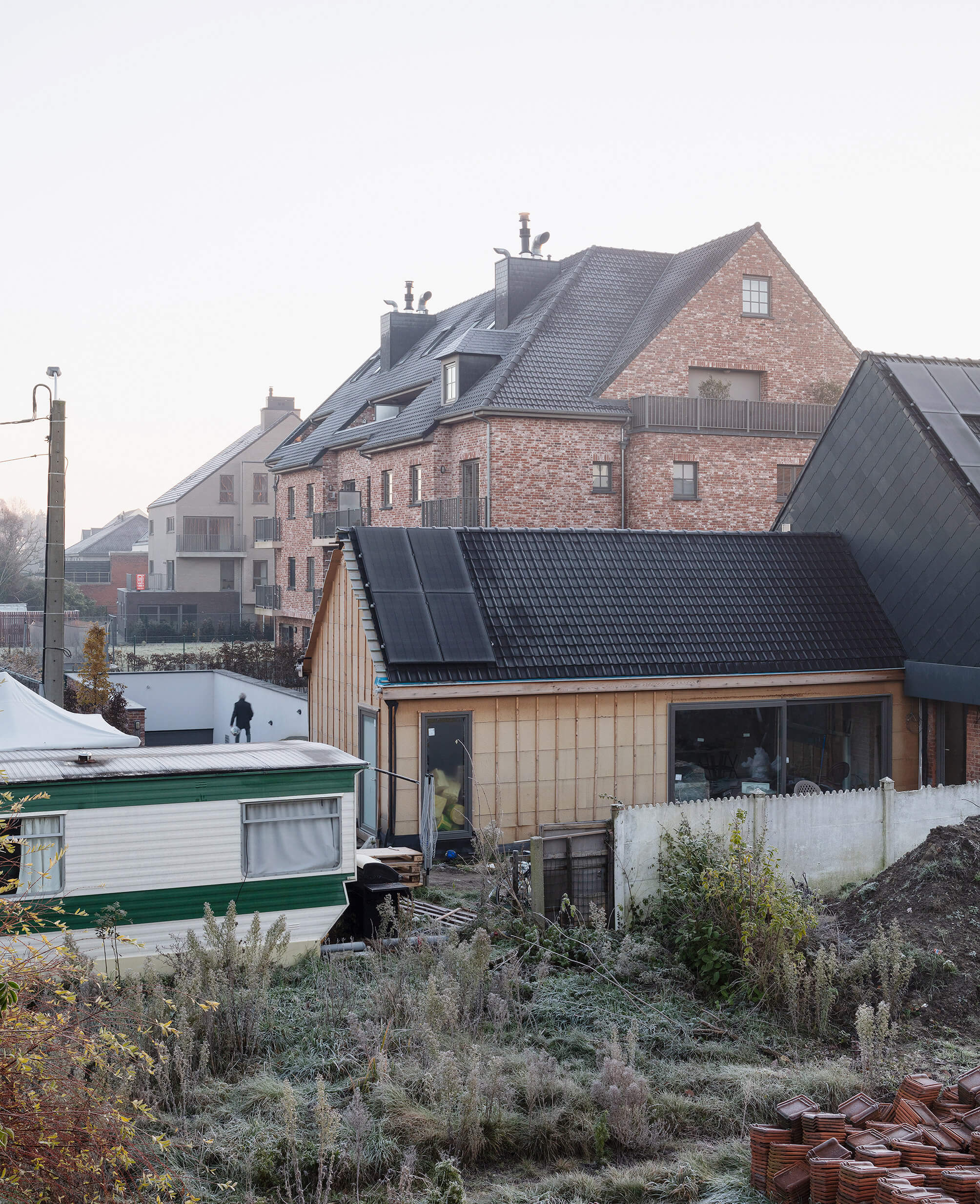
Depending on the language one chooses, the Wikipedia entry for ‘document’ shows a different picture. The French-language page shows what appears to be a Slovenian thesis written in 1984. The caption states it is a ‘book of Czechoslovak computer science author Květoslav Šoustal about computer networks’. The image was uploaded by Kelovy, a Slovakian mushroom-picker.
The anonymous hand rests on a lemon-yellow tablecloth, on which a yellow book and a blue binded file lie. The top left corner is the most intriguing, however: the tablecloth seems to be draped over a lemon, alongside a drinking glass. The cloth, however, does not get shaped by the lemon. Nor does the shadow-side of the lemon coincide with the shadow the other documents throw on the tablecloth. A closer look seems to indicate that the lemon is in fact an image of a lemon, printed on a plastic napkin.
The Russian wikipedia shows the image of a lease agreement. The German wikipedia for ‘document’ is text only.
https://fr.wikipedia.org/wiki/Document#/media/Fichier:KVETOSLAV_SOUSTAL_BOOK.JPG, created October 3, 2006 / original in original: paper, 1984

An architect in Z. receives a reminder. ‘Please send, as soon as possible, the plans of the construction before the damage.’ The reminder was sent by the Ministry of Reconstruction, in 1951. The architect’s address in Z., as mentioned in this file, is nowadays a house adjacent to Saloon Redbarn, a hall used for activities organized by a club of country and western-aficionados.
Semi-translucent paper, typoscript, stamps, handwritten notes and signature, from the archive of architect O. Clemminck, file ‘Remi Van Bockstael’
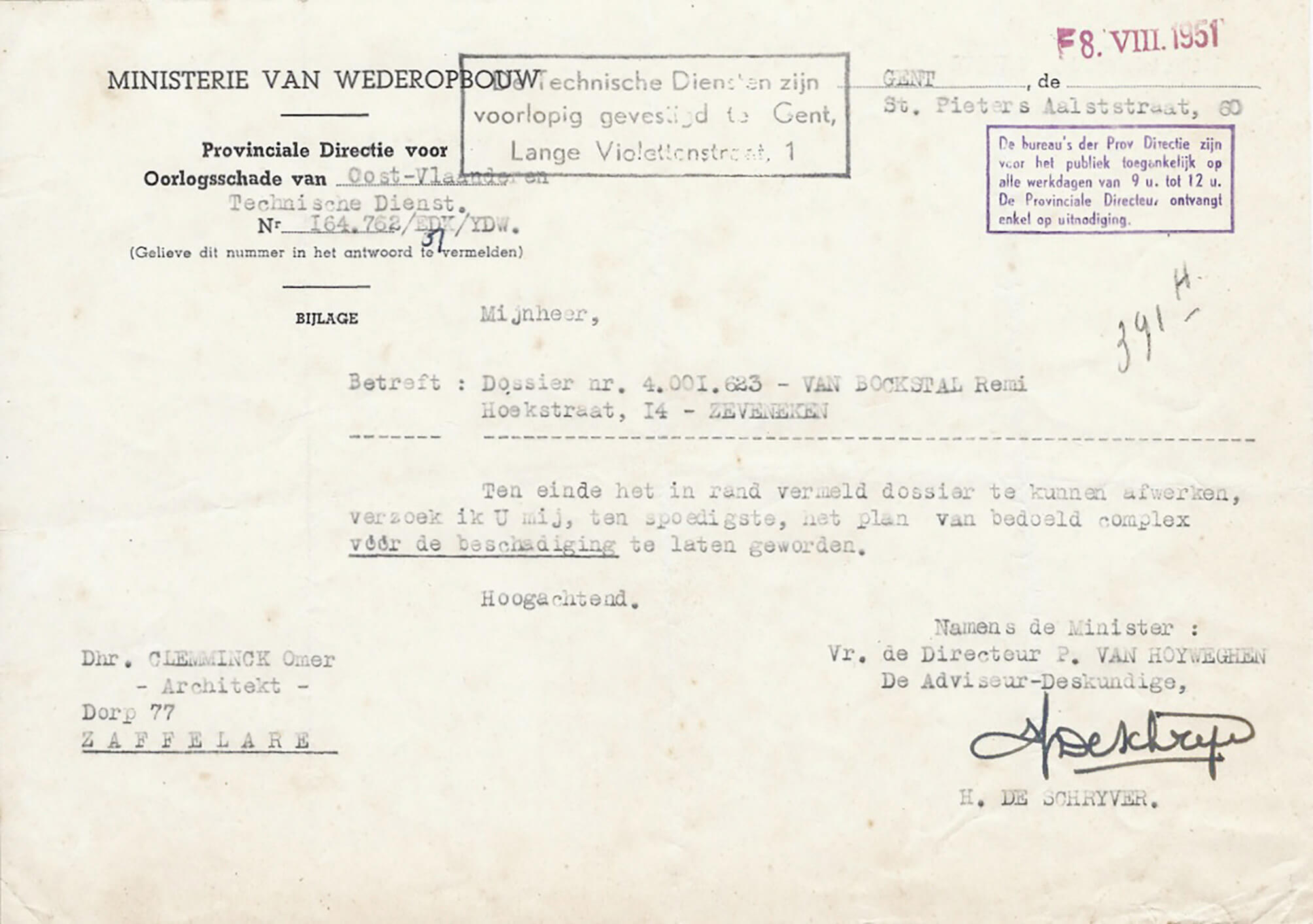
On May 6th 2020, 14h06 and 31 seconds, the Belgian Seismological Institute records an earthquake with a 1,7 magnitude in the region of Braine-Le-Compte. Three reactions from people in the neighbourhood, filed by the Institute, confirm the official seismological recordings. The Institute’s website classifies the earthquake as a ‘quarry blast’.
http://seismologie.be/nl/seismologie/aardbevingen-in-belgie/en130qj1o

Near Avenue 61 on an artificial island close to Seef, a truck is being towed after the driver lost control over the vehicle and flipped it onto its side. A warm wind blows in from the Persian Gulf.
A police officer signals us to come closer. ‘Why are you taking pictures?’ he asks. ‘This is just an accident. You have to delete the pictures from your phone. Now.’ After checking the pictures-folder on our phones, he gets in his car, drives a few metres, stops the car and rolls down his window. ‘And don’t do it again!’ he yells. Then he drives off, raising a cloud of sand in his wake.
Photograph taken and recovered from my trash bin on 18.12.2020.

Halfway March my dad started finding empty clam shells on the banks of the Zuidlede along the pasture where he used to herd sheep. He had never seen this type of clam before. There were easily seventy of them along a hundred metre stretch of riverbank.
He brought two specimens to someone he knows in the neighbouring provincial domain. She would look into it, she said, and that she would probably pass it on to someone at the educational department.
Yesterday he (my dad) received a printout of the Dutch wikipedia-page on the Brakwaterstrandschelp (Rangia Cuneata). On the page Paul (who sends his regards at the bottom of the document) traced around the scallops with a blue ballpoint pen.
My dad added in capitals – also with a blue ballpoint pen – that the Rangia Cuneata is an invasive species, native to the Gulf of Mexico. The first time it was observed in Europe was in Antwerp in August 2005, most probably they reached Europe in the ballast water tanks of large ships.
